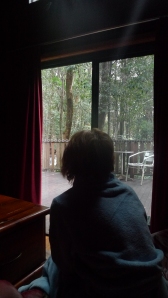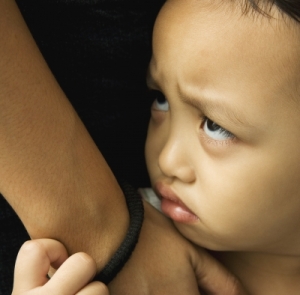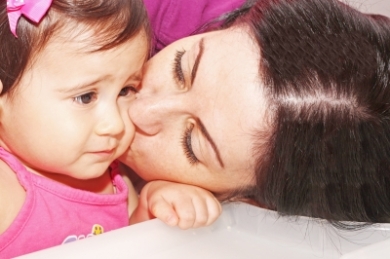I’ve previously promised that today’s post will expand upon Erik Erikson’s third stage of human development, that of ‘Initiative versus Guilt’; but I’d like to deviate for a day or two to take you on another exploration of the soul, a topic that is, after all, the main thrust of this blog.
Just a few weeks ago I had an extraordinarily confronting experience with my own brain. According to a SPECT scan, my brain and I aren’t exactly on the same wavelength, and I’ve been struggling with what that means for me, for my thought processes and emotions, ever since. Can I trust myself? Is what I hear and see and feel real, or a product of some sort of distorted perception, the kind that can happen with certain types of brain pathology? (And this kind of thinking, in itself, can transport one into the realms of madness.) At this point, doctors are not particularly forthcoming with answers, being as bamboozled as I am by my strange results. What chance do I have of putting it all together?
I guess all I can do is what I’ve always done, and that’s to investigate the bigger picture. So while this post is, on one level, about me and my particular illness, it’s more about the broader picture.
At this point, I’ll give some brief history. Seventeen years ago, an enterovirus ripped through my body. It hit me at a time when the stresses on both my body and on my emotional health were acute. Having had major surgery after a year of continued,undiagnosed ill-health (please forgive me for not going into personal details here), I found myself in the throes of a relationship breakdown. This particular breakdown came as an utter shock, further weakening my immune system. Then, because I was unable to look after my two young daughters on my own during the coming months of recovery, I had to leave the home I loved to live in a city I hated, leaving a stockpile of accumulated grief for me to sift through.
Enter the beast. The virus ravaged my central nervous system, affected my heart and general vascular system, enlarged my spleen, weakened my liver, and over time, ruined my digestive health and musculature, and exhausted my adrenals. I never recovered.
Unfortunately, the condition is little understood or even recognized by the majority of physicians, so it has taken close to two decades to find a doctor willing to investigate properly and order tests beyond routine blood tests. One of those tests was the brain SPECT scan, which clearly showed reduced blood flow in the frontal, temporal and parietal lobes.
Okay, so that’s my individual story. As I’ve always done, I’ve conducted my own fact-finding mission, bearing in mind that not everything one reads on the internet is accurate, yet acknowledging that there are some very reliable sources if we dig deep enough.
While I found much of interest as my fingers did the walking, the source that grabbed my attention is an article I found on www.mercola.com. Dr Mercola is a holistic practitioner who has spent many years researching therapies from both the mainstream and alternative fields of medicine, then offering his two cents worth to the public. The article, which can be found here, gives us a look into the controversial world of Dr Daniel Amen, a psychiatrist whose methods do not always find favour with his peers. Perhaps not such a bad thing.
In his practice, Dr Amen uses brain SPECT scans to detect any areas in which his patients are experiencing reduced blood flow. These areas of decreased blood flow indicate brain pathology, and follow-up tests can be done to detect, among other things, cysts, tumours and the destruction of neural pathways. According to Dr Amen, a good number of patients who present with behavioural problems such as aggression and low impulse control, turn out to have measurable brain pathology. Hmmm. He even tells the story of his own nephew who, having previously been a placid boy, was suddenly in trouble for beating up kids on the playground. When his sister brought her son in for a check up, Dr Amen discovered a sizeable cyst in the pre-frontal cortex, an area known to be associated with impulse control. The cyst was removed and the boy returned to his usual, calm self.
What does all this potentially mean? Should we be so quick to judge a person’s behaviour, even when that behaviour is as repulsive, as reprehensible, as murder? Is a person really just the sum of parts? Is there a soul attached to this brain of ours, and is that soul somewhat at the mercy of the intricacies of brain function or pathology? Dr Amen suggests that it is; that the brain represents the hard-wiring of the soul, hence the title for this essay. He further suggests that if the physical integrity of the brain is not maintained, then it has implications for the expressions of the soul. It’s murky waters certainly. And yet, I suspect that, human beings and human behaviour being what they are, we should at least reserve our judgment. Perhaps…just perhaps…there but for the grace of God, go I?
On a personal level, am I excusing my own shortcomings? Not at all. Having the light shed on the physical issues gives me understanding and compassion for myself, as well as for those who deal with me in the day to day, particularly my husband and children. It also gives me hope. That hope opens up a world of possibility for change and further exploration. If the brain impacts the soul, then perhaps, just perhaps…the soul can impact the brain.



